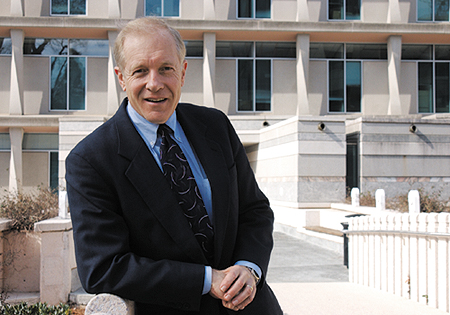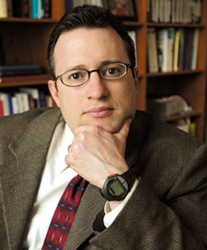|
Unfortunately, these words have become an all too familiar part of our vocabulary. And alongside these crisis-laden threats to the public’s health are risks of the more everyday variety. For example, research documenting the growing national problem of obesity. Or conflicting studies about the health benefits and risks of alcohol consumption. Or new evidence challenging prescriptions such as hormone replacement therapy––once considered a virtual panacea for menopausal women’s cardiovascular health––now cited as a health risk. How can the public, bombarded with health news and factoids, some routine, others in times of crisis, know what is accurate? How can health risks be communicated in effective ways that make a positive difference in people’s lives? And what happens when public health experts don’t know all the facts about an emerging or urgent health risk but still must confront a demanding press and frightened citizens who want answers? Those are just some of the health communication questions Jay Bernhardt, Melissa Shepherd, and other colleagues at the Rollins School of Public Health (RSPH) are working to answer.
With a broad mandate––to inform and influence individual and community decisions that enhance health––public health communication has evolved to include areas of specialized focus such as information technology, health literacy, social marketing, and risk communication. An emerging area of focus that draws from the fields of business and emergency preparedness is known as emergency risk communication, or crisis communication.
Applying communications basics in an emergency Last fall, Shepherd developed and began teaching a new course at RSPH that deals with issues related to crisis communication and public health. Her course encompasses what public health professionals need to know about communicating effectively if they are running an outbreak in a time of crisis. It focuses on real-world situations from the perspective of epidemiologists and public health practitioners on the front lines. Bernhardt and Shepherd both agree that applying what is known about effective communication––even during emergencies––is more critical today than ever before. “We can’t forget to practice health communication basics, like knowing your audience and effectively targeting messages, just because there is an urgent need to respond,” Bernhardt says.
Targeting health messages Press conferences and press releases, both potent tools for reaching the public, are only a small part of the health communication toolbox. A range of strategies is available, including direct mail campaigns, tailored brochures for individuals, interactive websites and kiosks, broadcast mass media messages, and community town hall meetings. In some developing countries, public health messages are regularly incorporated into soap operas and other popular entertainment programs. When proactive interventions work, the payoff can be enormous. “Using appropriate communication strategies to encourage those at highest risk to take actions like getting flu shots or wearing bicycle helmets are superb examples of how effective public health communication can be,” Bernhardt says. “Efforts like these have prevented countless injuries and saved thousands of lives.” But how do public health communicators act proactively when they are unsure what particular brand of health crisis is coming? According to Dan Rutz, 01MPH, special assistant for communications at CDC’s National Center for Infectious Diseases, the key is to prepare health communication strategies in advance. “The country has never been confronted with the kind of threat we are presently facing, and public health’s role is at once both obvious and evolving. The job of those of us working in health communication is to build communication products and strategies that are going to serve us if we ever need them,” says Rutz, who was senior medical correspondent at CNN for 18 years before enrolling in the Career MPH program at RSPH. “We can’t anticipate all scenarios, but we can develop an understanding of, for example, how bioterrorism agents work and how to craft messages that address issues such as whether agents are contagious and how to avoid exposure. These messages are easier to fine tune to meet the situation rather than starting from scratch when faced with an immediate crisis.”
Communicating during crisis “There has always been a demand for information during public health crises, but approaching risk and crisis communication as a science has emerged more recently,” says Ruth Berkelman, the center’s director. “Public health officials are now thinking systematically about their approaches to communication and their relationship to journalists. Academic centers, like ours, that have a clear focus in this area will be instrumental in training the public health work force in the science of risk communication.” The Office of Risk and Emergency Communication is working closely with other RSPH communication initiatives to help establish a broader focus on public health communication research, instruction, and practice. With funding and support from CDC’s Office of Communications, Bernhardt and Shepherd are coordinating the development of a Public Health Communication Certificate Program for mid-career professionals, scientists, and Emory graduate students. This program will include course study and field experience to give students and practitioners a foundation in the theories and principles that drive public health communication, as well as lessons and strategies for working more effectively with the media. Another aspect of public health communication that is revolutionizing the field is the impact of information technology. “Computers and the Internet offer enormous potential for health communication because they can facilitate the presentation of regularly updated information in a manner that can be interactive, personalized, entertaining, and non-judgmental,” says Bernhardt, who is the founding director of the Health Communication Technology Laboratory at the RSPH.
Bernhardt’s and Shepherd’s plans for future activities at the RSPH include a program targeting journalists. “I think we in public health are too quick to blame the media when reporters don’t get the facts right,” says Shepherd. “For change to happen, we need to address the issue of health communication with both journalists and public health practitioners. We need to look at how we have communicated our information, and we also need to help journalists understand our unique perspectives and issues.” Shepherd believes a new paradigm in public health communication is developing. “The biggest lesson we learned following the anthrax cases was that silence is not neutral. You are sending messages with silence whether you intend to or not. The message the public may receive from silence is that things are out of control,” she says. “We need to think of establishing a dialogue with the public that includes built-in opportunities for feedback. Only then can we be sure that we are truly communicating––resulting in a public that is both informed and empowered.”
Strong Partners | An idea, of SORTS | Class Notes Rollins School of Public Health
Copyright © Emory University, 2003. All Rights
Reserved. |




